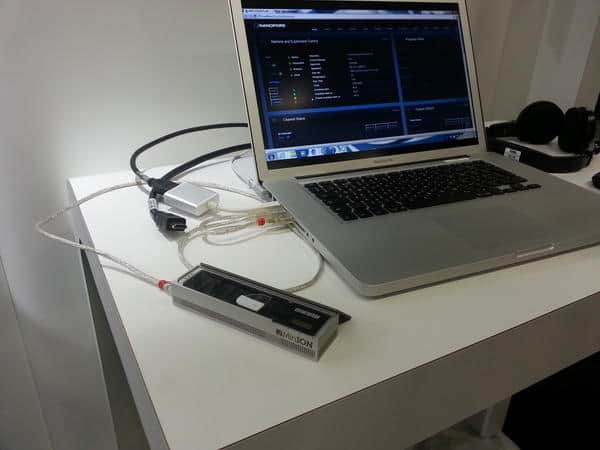If Universities are to provide greater economic and social impact, alongside their roles of research and teaching, one important way to do this is through technology transfer: the movement of inventions from universities into new products and services. So, how do we get more technologies from our universities to the market?
Isis Innovation, Oxford’s technology commercialisation company, has set up over 100 companies in the last 25 years based on University intellectual property, including NaturalMotion (sold to Zynga for $527m) and Oxford Nanopore. Here are six suggestions based on the Oxford experience.

1. Prove the concept
Perhaps the most critical part of the process of moving from ‘lab to market’ is generating a prototype. This provides the necessary confidence for a potential licensee or investor in the technology to move from merely curious to fully engaged. Some universities, including Oxford, have their own seed funds for this. The Technology Strategy Board (TSB) also provides funding opportunities through its Smart scheme.
With funding secured, it is important to work with good development partners that can take the aspirational plans of the inventors and develop an investable output. The prototype doesn’t need to be perfect – it does need to demonstrate the technology works and has potential.
2. Develop your networks
Networks can provide the answers to the unknowns that arise in moving a technology to market; ‘who can fund the prototype?’ or ‘what is the market opportunity in China?’
The Oxford Innovation Society was established almost 25 years ago to allow companies to help provide answers to these questions. The Society brings together researchers, inventors, spin-outs, local companies, investors and some of the world’s most innovative multinationals. It supports long-term commercialisation of ideas. Cambridge, Stanford and MIT have similar networks, albeit with slightly different arrangements. Building virtual networks and an online presence through sites such as LinkedIn is also a good idea.
3. The ideal partner (an SME?)
The ideal commercialisation partner for a University technology could be located anywhere in the world. Rather like looking for a spouse or partner, it probably doesn’t pay to search endlessly for the perfect match, but it is worth keeping your horizons broad.
Oxford’s 200 most recent commercial technology licensing deals were with companies based all around the world, and over 50 per cent of the licensees were start-ups/spin-outs or the engine room of the UK economy, SMEs.
In seeking to support SMEs, Isis offers these companies a “light touch” development license with greater flexibility and reduced business risk allowing them to apply their development expertise to turn a scientific technology into a new product design. Once the new product design exists, the second stage gives the SME three options; make the product internally, out-license the designs or pass the technology back to Oxford. In each of these scenarios the SME will earn a share of any future revenues. This scheme has been welcomed by the TSB and recently won an award from the UK’s Intellectual Property Office.
4. The real returns
University research is rarely close-to-market, and real returns often take many years to appear (novel software code might see a return a bit sooner). However, the pay-offs can be substantial.
A 2006 deal, in which London-based venture capital fund Technikos provided £12m for the University of Oxford’s Institute of Biomedical Engineering in return for half of the University’s equity in new companies based on IBME intellectual property, is a good example of stakeholders taking the long-term view. The investment contributed to building and equipment costs as well as providing funding for strategic staff appointments. Some eight years after the agreement was signed, the resulting strategic relationship has recently notched up its tenth spin-out company in the biomedical engineering field. Success is measured over many years, not months.
5. Look at the overall impact
The benefits of successful technology transfer are not just commercial. The businesses created, the students employed, the lives improved through new products and process, all provide a valuable return on investment. If we fully recognise these non-commercial benefits and then direct investment of suitable resources in technology transfer accordingly, we will enable more great engineering ideas to move from our universities into industry.
6. In for the long haul
In Oxford the typical time to sign a commercial deal based on a new technology is about 3 years, but can be up to 10 years. During this period, Isis may file patent applications, help to find funds for a prototype and actively market the technology. Even after securing a licensing deal it can be some years before a commercial return is seen by a University. Quite a commitment.
The willingness of stakeholders (including Universities, government, investors and funding bodies) to provide resources to support this commitment varies across the UK. Oxford is fortunate to have an exciting array of world-class science that stimulates significant interest. However, it is still necessary to make hard decisions on which technologies can be backed. For less well-endowed Universities it is a really tough choice. If we wish to see more great ideas emerge from University laboratories then galvanising stakeholder resources to support technology transfer will continue to be vital.




Report highlights significant impact of manufacturing on UK economy
Note to Evil Villain/Dave 2020. Thatcher was PM for _11_ years, from 1979 to 1990 so no one under the age of 34 was even born when she left office....